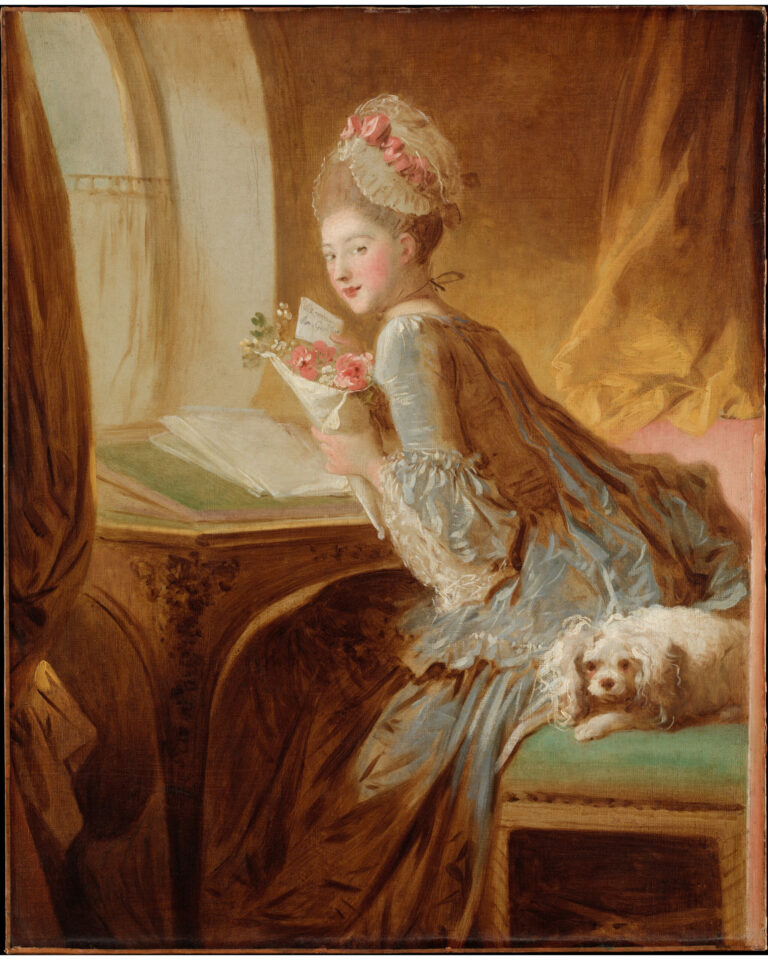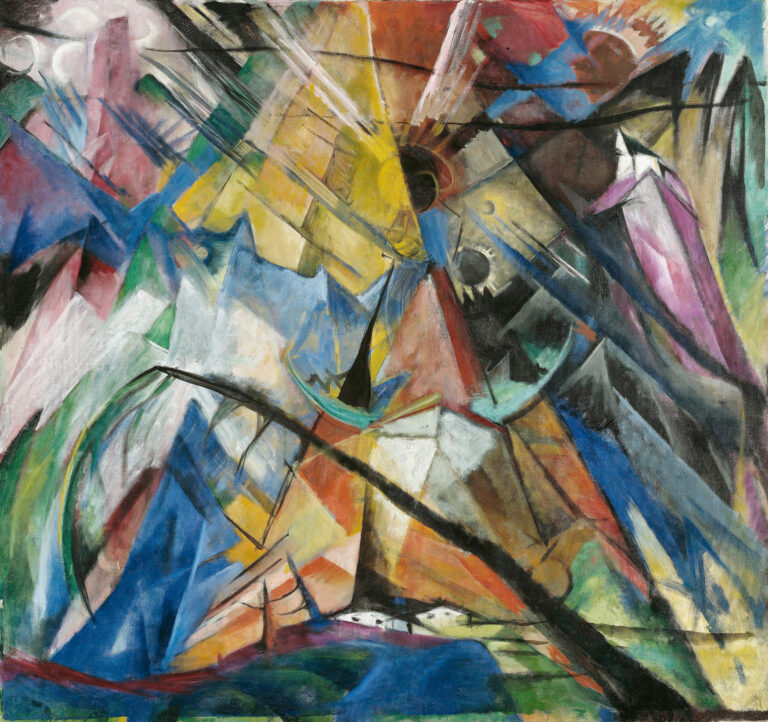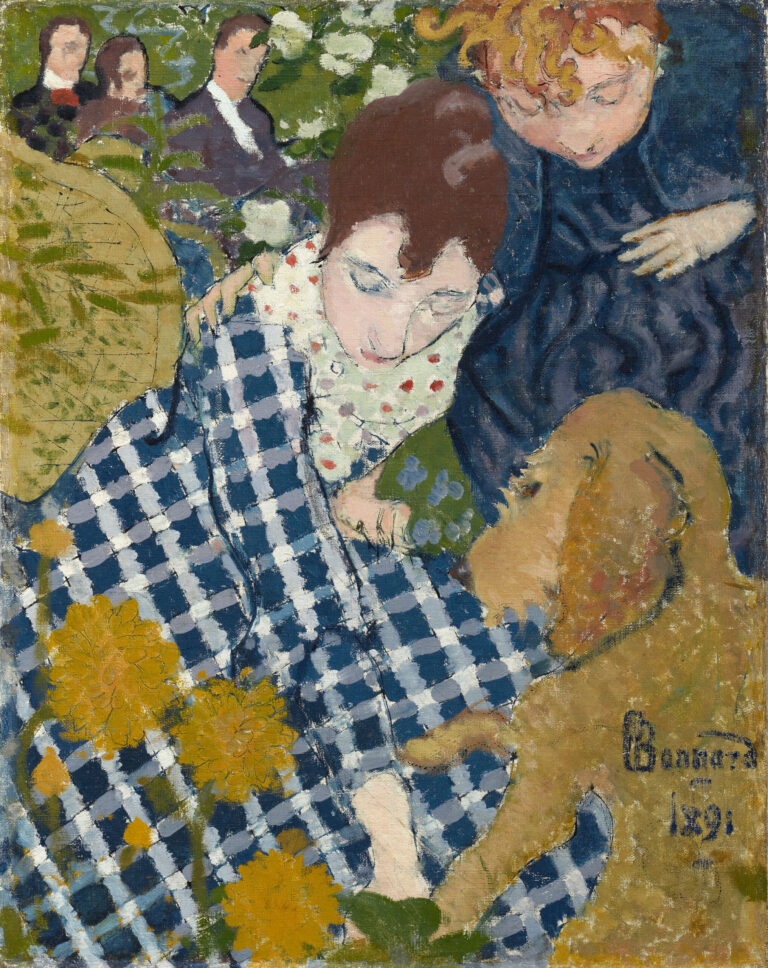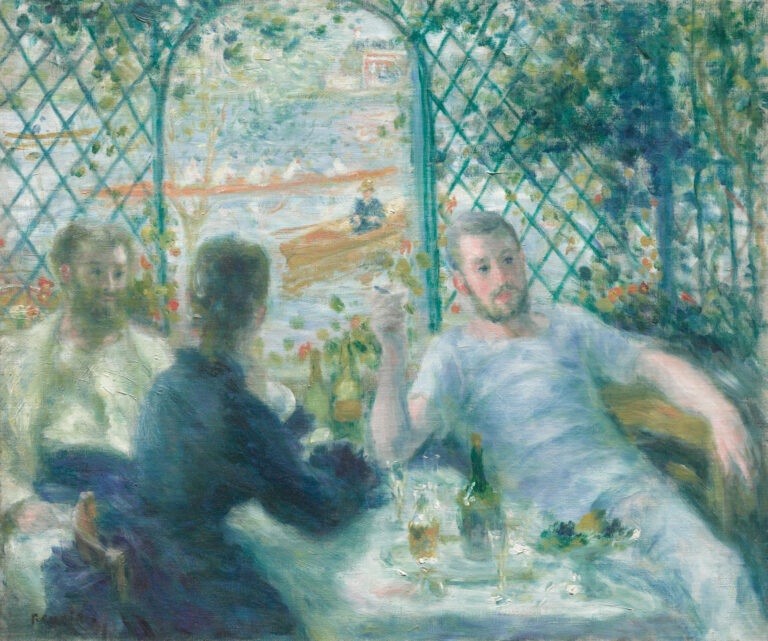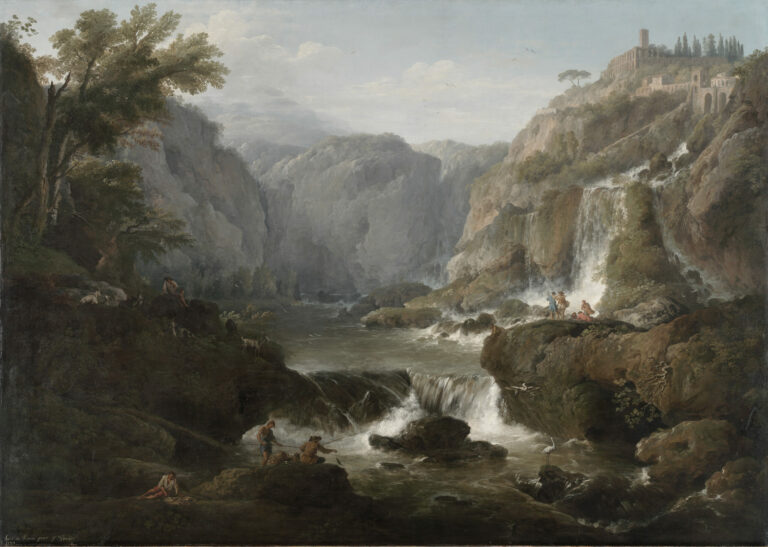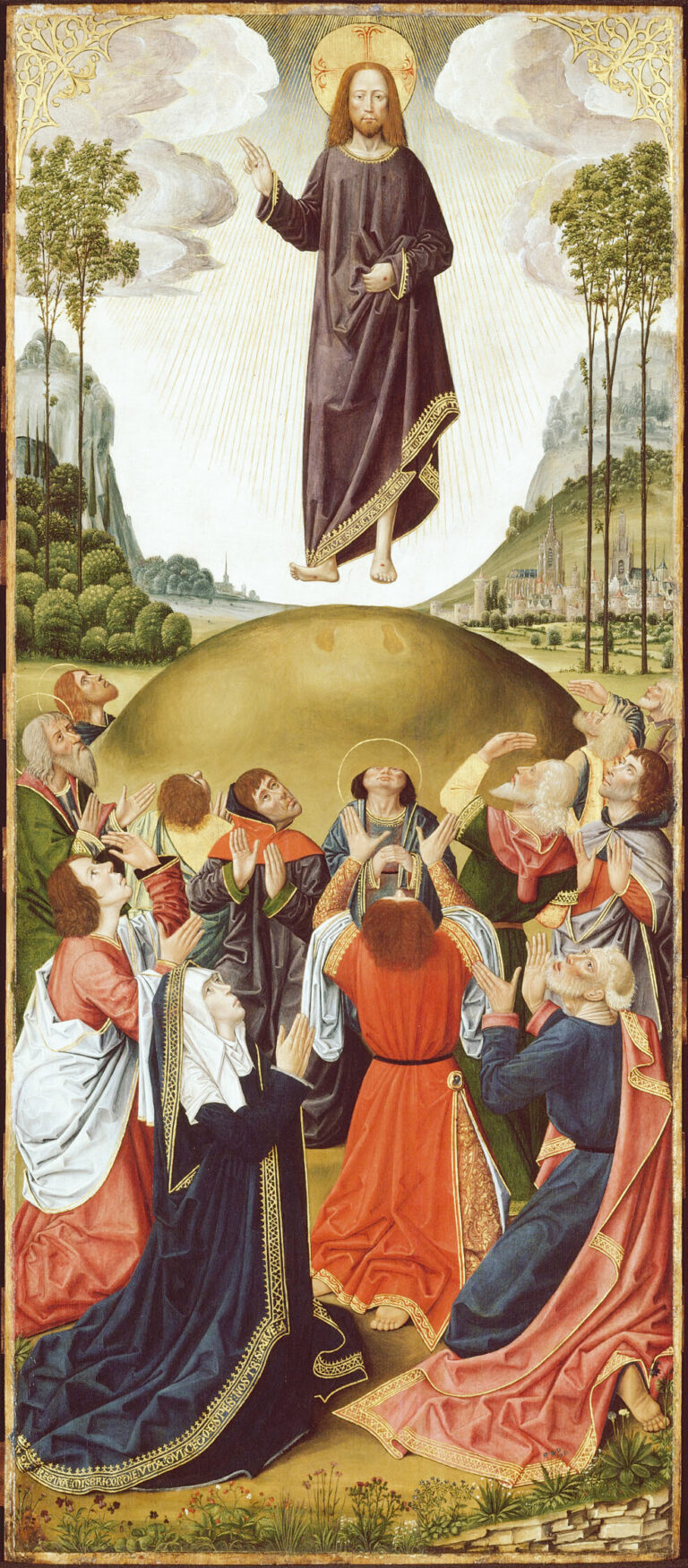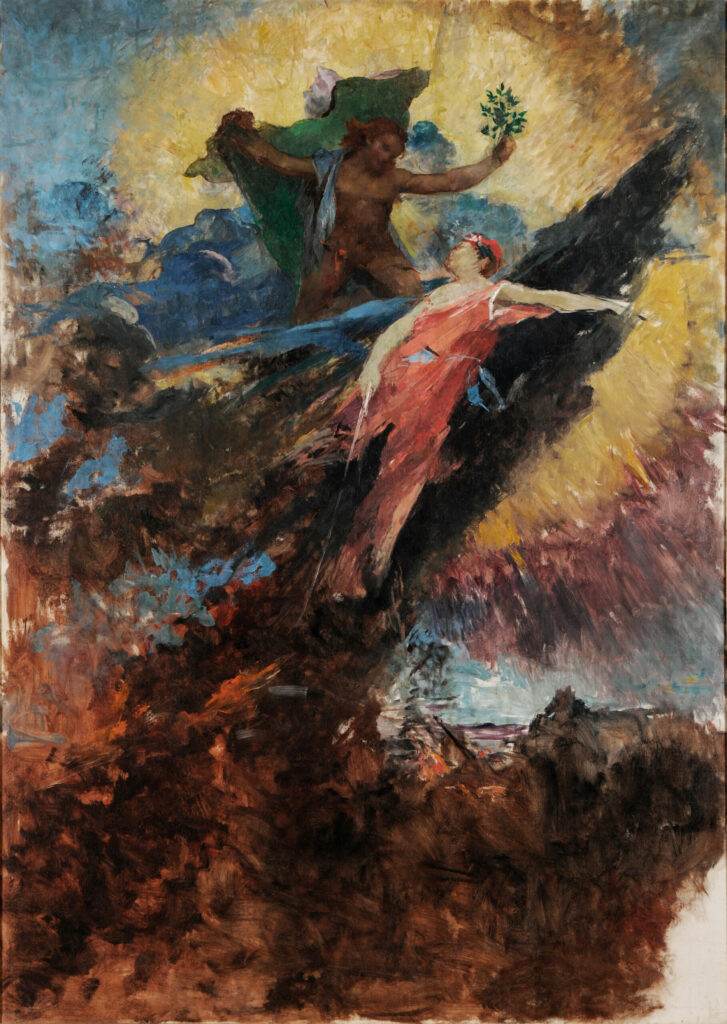
This monumental sketch of “Apollo and Daphne” by George Desvallières, painted circa 1889-1890, bears witness to the creative fervor of the young artist under the influence of Gustave Moreau.
The work transposes Ovid’s episode of the nymph transformed into a laurel tree with striking pictorial freedom: the impasto and expressive gestures reveal an artistic temperament already freed from academic conventions. The dynamic composition contrasts the two protagonists in a chromatic whirlwind dominated by burnt ochres, deep blues, and carmine reds. This sketch anticipates the colorist audacities of Fauvism that Desvallières would later champion at the Salon d’Automne. Here the artist deploys an innovative plastic language, blending mythological references with pictorial modernity. This work perfectly illustrates his capacity to transcend the Symbolist heritage and open new expressive paths, prefiguring his future evolution toward sacred art.
Further information
- George Desvallières, Apollo and Daphne, circa 1889-1890, Reims, Musée des Beaux-Arts (inv. 2007.7.1) Photo: © Christian Devleeschauwer
- 350 x 250 cm
- https://musees-reims.fr/oeuvre/apollon-et-daphne
George Desvallières (1861-1950) embodies a singular artistic trajectory, marked by a dual aesthetic and spiritual revolution. Trained under Élie Delaunay and then profoundly influenced by Gustave Moreau, he initially developed a Symbolist style nourished by ancient mythology. As president of the Salon d’Automne, nicknamed “uncle of the Fauves” in 1905, he supported emerging avant-garde movements. The Great War transformed his artistic vision: the death of his son Daniel in 1915 and his own ordeals at the front led him to dedicate his art to religious themes. Co-founder with Maurice Denis of the Sacred Art Workshops in 1919, he became one of the great renovators of modern religious painting, advocating for spiritual art accessible to all and reconciling Christian tradition with contemporary language.

